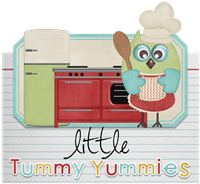Summary of High Chair Manners:
Because baby and mom will be spending a lot of time together, consider meal time an opportunity to teach basic skills and table manners. Too often parental training is reactive and restrictive, not proactive and directive. It is much easier to train a child in right behaviors that to retrain them once wrong behavior patterns have been established. Make "Train, don't retrain" your motto. I also like "Start as you mean to go on."
If you think that you will be fine with your baby doing any of the Common High Chair Problems listed below as they grow into a toddler, then that is perfectly fine. Every parent must decide what behavior is acceptable to them. However, if you think that that is behavior that you will quickly grow tired of, then consider starting out with a proactive mentality that you will work to establish a right pattern by teaching your baby where to put his or her hands first, rather than working to correct an undesirable behavior, such as putting hands in food, then in hair etc, later.
Important High Chair Manner Concepts:
- Self-Control Training With Hands: Meal time is a great time to teach babies self control with their hands. This is so important, and can be taught from quite young. This skill can continue beyond the high chair, but this is a opportune time to work with little ones. Some behaviors must be restricted. For example, do not allow a baby to play with a puree with his or her hands. The food usually ends up everywhere! A baby also does not need to hold the utensil that you are using to feed him or her, wait until the baby has the necessary fine motor skills to be able to feed themselves before you consider allowing them to feed themselves with a spoon, otherwise you will just end up with a big mess on your hands. Meal time is not play time. Initially you may have to help your baby with this one. First correct verbally with a "Where do your hands go?" and then physically restrain the child's hands. Eventually a simple verbal correction is all that should be required.
- The Importance of Verbal Instruction: Babies are able to understand many things, long before they can verbalize them. Don't assume that your baby cannot understand what you are saying to them and remember that the language comprehension skills develop fast. A six month old can understand some basic things such as their names, but by the time a baby gets to ten months old, he or she can understand quite a bit!
Common High Chair Problems:
- Flipping the Plate
- Dropping and Throwing Food
- Playing with Food
- Placing Messy Hands in the Hair
- Banging on the Tray
- Standing in the High Chair
- Arching the Back
- Spitting Raspberries
- Screaming
Methods of Correction: Parents should help infants develop healthy behavior patterns that will enable a child to learn about life. Those patterns include paying attention, focusing, and concentrating on what he or she is doing - all fundamental skills of life. The parent will encourage children in right behavior and by correcting wrong behavior. In a pre-toddler phase of development, behaviors needing correction are initially wrong functionally but not morally.
- Verbal Correction: This requires the exercise of verbal authority. For example, try a firm "That's a NO" or "Where do our hands go?" or whatever phrase you use.
- Isolation in the Crib: Removing a child from an act or place of consequence and putting the child in his or her crib. Even a very young child can learn cause-and-effect relationships and that behavioral expectations are not negotiable.
- Loss of a Privilege or a Toy: This is a logical consequence that works effectively. The purpose of logical consequences in pre-toddler training is to reinforce your verbal instructions.
- A Light to Moderate Squeeze to the Hand: Applying moderate discomfort as a method of correction is reserved for the older, more mobile pre-toddler whose hands are touching what they should not be. It is not used as a punishment, but as an attention getting device. A squeeze on the hand, when accompanied by a verbal correction acts as a deterrent to wrong and health threatening behaviors.
This is just a summary for anyone reading this blog. A more complete description of High Chair Manners can be found in On Becoming Babywise II.
Personal Note (from Stori):
One of the things that I love about Babywise is that it has given me a lot of freedom that I normally would not have thought I would be able to have with a young one. For example, I used to think that it would be impossible to go to dinner with a toddler because I had heard so many horror stories of toddlers misbehaving - throwing food, putting food in their hair, and generally making a HUGE mess.
Learning about High Chair Manners through Babywise has made me confident that I will be able to teach Little Frances how to behave at meal times and make eating out a pleasant experience for the family rather than a difficult situation to be avoided. Plus, I don't want to have to end up with puree all over me and our kitchen after every meal time at home! Of course, no infant or toddler is perfect so I expect that we will have slip ups and my first attempt at high chair manners was very humbling :), but I am just going to keep trying.




















No comments:
Post a Comment